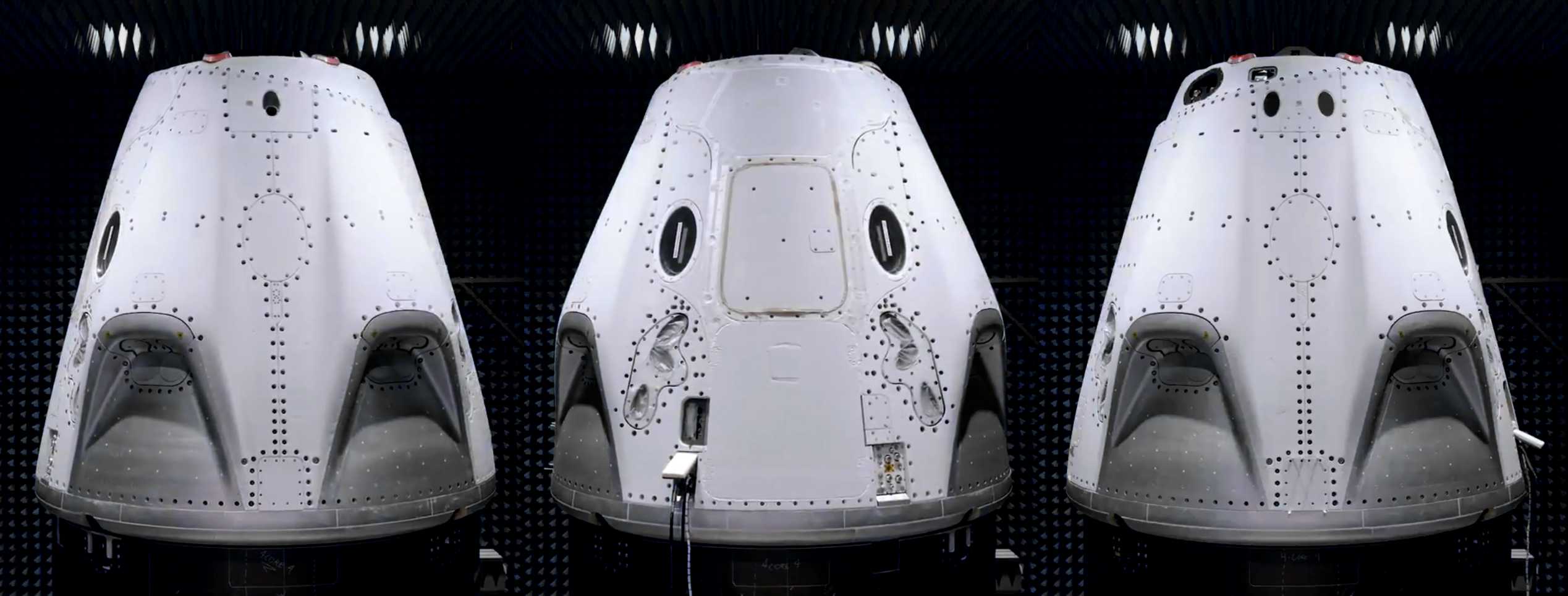
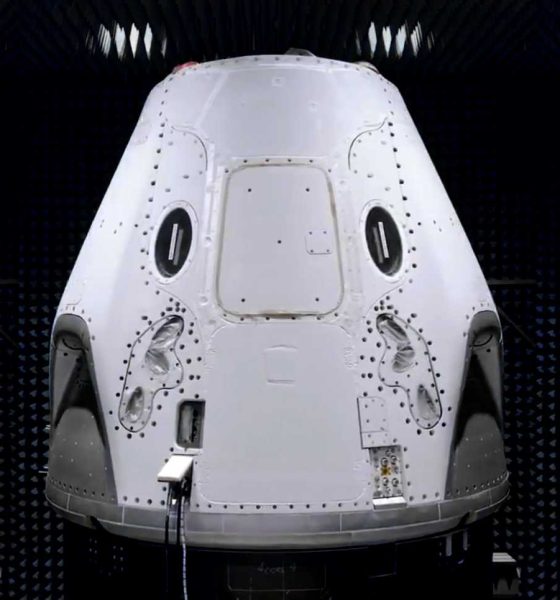
News
SpaceX's first astronaut-ready spaceship wraps up final factory tests before heading to Florida
Set to become the first commercial spacecraft ever to launch NASA astronauts, SpaceX has revealed that its newest Crew Dragon spaceship is in the midst of its final major factory tests, meaning that it could be just a matter of days before it ships to Florida.
Originally built to support SpaceX’s first operational NASA astronaut launch (PCM-1), an explosion that destroyed capsule C201 forced the company to shuffle its fleet and reassign that spacecraft (capsule C206) to an inaugural crewed test flight known as Demo-2. Thankfully, although C201 did explode during post-recovery static fire testing, the spacecraft had flawlessly completed an uncrewed test flight (Demo-1) the month prior, demonstrating a nominal Falcon 9 launch, space station rendezvous, docking, orbital reentry, and splashdown without a single visible hiccup. In short, Crew Dragon’s Demo-1 launch debut could not have gone better.
Around nine months later, having overcome the biggest hurdles posed by capsule C201’s explosion and unrelated parachute failures, SpaceX successfully launched its second finished Crew Dragon capsule – C205 – on a Falcon 9 rocket. That January 19th In-Flight Abort (IFA) test proved that SpaceX’s first human-rated spacecraft can safely whisk astronauts away from Falcon 9 even if it were to fail at the most stressful point of launch. Now, less than a month later, SpaceX’s third finished Crew Dragon spacecraft is nearly ready to head to Florida to begin preparing for the company’s historic astronaut launch debut.
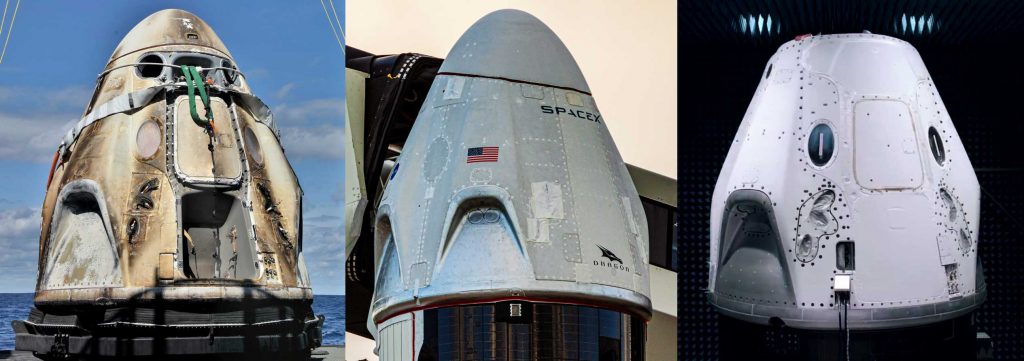
On February 11th, SpaceX released a video showing a 360-degree view of the Demo-2 Crew Dragon spacecraft (C206) inside its Hawthorne, CA factory’s built-in anechoic chamber – used to perform routine electromagnetic interference (EMI) tests. Meant to verify that Crew Dragon is protected from interference that can be caused by internal and external sources of electromagnetic radiation, EMI testing implies that all of the spacecraft’s systems are installed and operational.
Positive EMI test results should mean that Crew Dragon C206 is (more or less) ready to be transported to SpaceX’s Florida processing facilities.
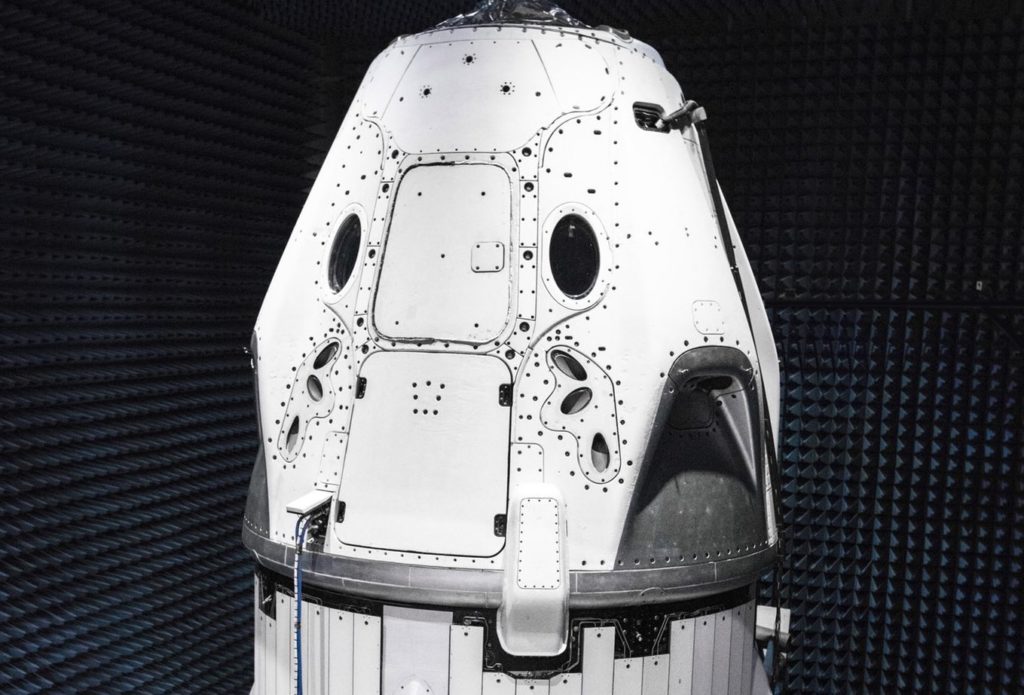
Comprised of a recoverable, reusable crew capsule and an expendable trunk section, the latter part of the Demo-2 Crew Dragon spacecraft is somewhat conspicuously absent in C206’s EMI test video. This seems to imply that its trunk was either tested independently and shipped to Florida beforehand or still needs to be completed, given that EMI testing is generally more effective when performed with a truly complete vehicle.
Crew Dragon’s Demo-2 trunk did appear to be well on its way to completion more than four months ago, so the former explanation is arguably more plausible.
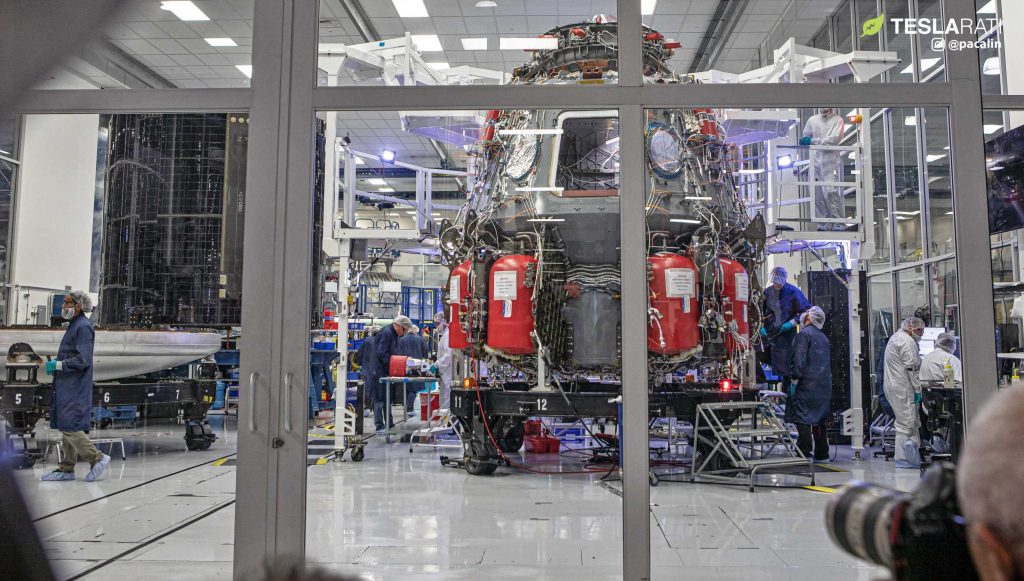
Ultimately, Crew Dragon C206, its Demo-2 trunk section, and Falcon 9’s booster and upper stage are all expected to be at SpaceX’s Florida processing and launch facilities by the end of the month. According to Ars Technica reporter Eric Berger, NASA and SpaceX are working towards a Crew Dragon astronaut launch debut sometime in late-April to late-May and are maintaining a tentative placeholder date on May 7th, 2020.
Looking at past trends, the Crew Dragon spacecraft assigned to SpaceX’s In-Flight Abort test arrived in Florida around the start of October 2019 and was vertical on Falcon 9 and ready for launch by mid-January 2020 — a delta of about 15 weeks. In the interim, SpaceX had to prepare Crew Dragon capsule C205 for an unusual abort thruster static fire test to verify that the fault that destroyed capsule C201 was solved. That test was completed by mid-November. In other words, all things considered equal, SpaceX could technically be ready to launch its first astronauts as few as 6-9 weeks from now – early to late April – if Crew Dragon C206 ships to Cape Canaveral within a week or two.

At the same time, compared to Crew Dragon’s Demo-1 and IFA test flights, Demo-2 will have many more moving parts and much higher consequences at stake. Still, barring any unforeseen problems, it’s starting to look all but certain that Crew Dragon will perform its inaugural astronaut launch before the first half of 2020 is out.
Check out Teslarati’s Marketplace! We offer Tesla accessories, including for the Tesla Cybertruck and Tesla Model 3.

Elon Musk
NVIDIA CEO Jensen Huang commends Tesla’s Elon Musk for early belief
“And when I announced DGX-1, nobody in the world wanted it. I had no purchase orders, not one. Nobody wanted to buy it. Nobody wanted to be part of it, except for Elon.”
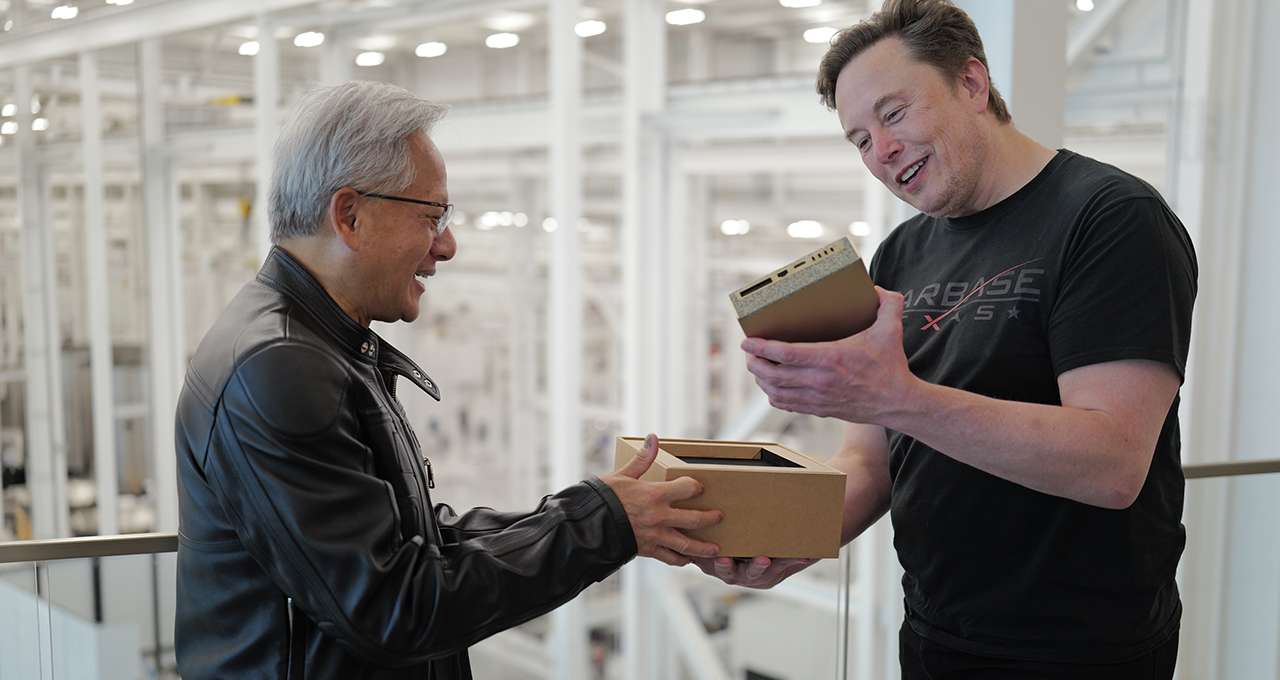
NVIDIA CEO Jensen Huang appeared on the Joe Rogan Experience podcast on Wednesday and commended Tesla CEO Elon Musk for his early belief in what is now the most valuable company in the world.
Huang and Musk are widely regarded as two of the greatest tech entrepreneurs of the modern era, with the two working in conjunction as NVIDIA’s chips are present in Tesla vehicles, particularly utilized for self-driving technology and data collection.
Nvidia CEO Jensen Huang regrets not investing more in Elon Musk’s xAI
Both CEOs defied all odds and created companies from virtually nothing. Musk joined Tesla in the early 2000s before the company had even established any plans to build a vehicle. Jensen created NVIDIA in the booth of a Denny’s restaurant, which has been memorialized with a plaque.
On the JRE episode, Rogan asked about Jensen’s relationship with Elon, to which the NVIDIA CEO said that Musk was there when nobody else was:
“I was lucky because I had known Elon Musk, and I helped him build the first computer for Model 3, the Model S, and when he wanted to start working on an autonomous vehicle. I helped him build the computer that went into the Model S AV system, his full self-driving system. We were basically the FSD computer version 1, and so we were already working together.
And when I announced DGX-1, nobody in the world wanted it. I had no purchase orders, not one. Nobody wanted to buy it. Nobody wanted to be part of it, except for Elon.
He goes ‘You know what, I have a company that could really use this.’ I said, Wow, my first customer. And he goes, it’s an AI company, and it’s a nonprofit and and we could really use one of these supercomputers. I boxed one up, I drove it up to San Francisco, and I delivered it to the Elon in 2016.”
The first DGX-1 AI supercomputer was delivered personally to Musk when he was with OpenAI, which provided crucial early compute power for AI research, accelerating breakthroughs in machine learning that underpin modern tools like ChatGPT.
Tesla’s Nvidia purchases could reach $4 billion this year: Musk
The long-term alliance between NVIDIA and Tesla has driven over $2 trillion in the company’s market value since 2016.
Elon Musk
GM CEO Mary Barra says she told Biden to give Tesla and Musk EV credit
“He was crediting me, and I said, ‘Actually, I think a lot of that credit goes to Elon and Tesla…You know me, Andrew. I don’t want to take credit for things.”
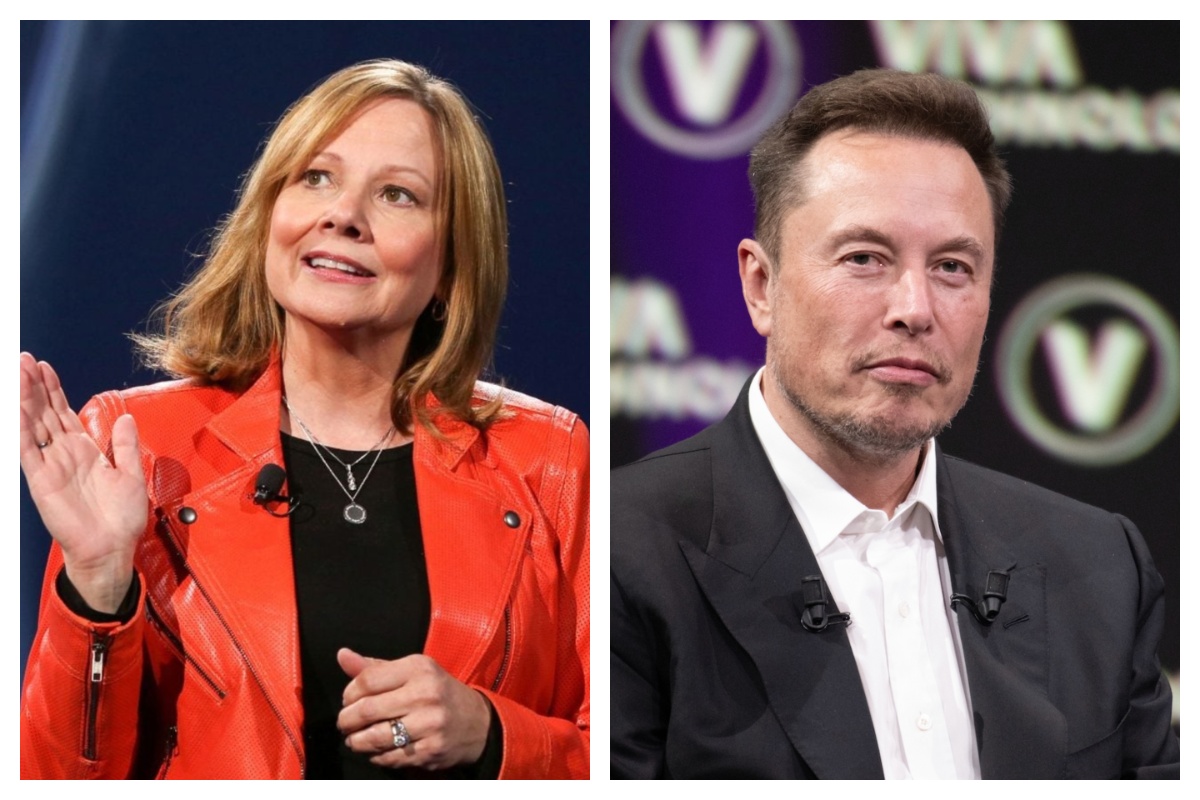
General Motors CEO Mary Barra said in a new interview on Wednesday that she told President Joe Biden to credit Tesla and its CEO, Elon Musk, for the widespread electric vehicle transition.
She said she told Biden this after the former President credited her and GM for leading EV efforts in the United States.
During an interview at the New York Times Dealbook Summit with Andrew Ross Sorkin, Barra said she told Biden that crediting her was essentially a mistake, and that Musk and Tesla should have been explicitly mentioned (via Business Insider):
“He was crediting me, and I said, ‘Actually, I think a lot of that credit goes to Elon and Tesla…You know me, Andrew. I don’t want to take credit for things.”
GM CEO Mary Barra said to Andrew Sorkin at the New York Times Dealbook Summit that she pulled President Biden aside and said Tesla CEO @elonmusk deserved the credit for EVs:
“He was crediting me, and I said, ‘Actually, I think a lot of that credit goes to Elon and Tesla,'” Barra… pic.twitter.com/OHBTG1QfbJ
— TESLARATI (@Teslarati) December 3, 2025
Back in 2021, President Biden visited GM’s “Factory Zero” plant in Detroit, which was the centerpiece of the company’s massive transition to EVs. The former President went on to discuss the EV industry, and claimed that GM and Barra were the true leaders who caused the change:
“In the auto industry, Detroit is leading the world in electric vehicles. You know how critical it is? Mary, I remember talking to you way back in January about the need for America to lead in electric vehicles. I can remember your dramatic announcement that by 2035, GM would be 100% electric. You changed the whole story, Mary. You did, Mary. You electrified the entire automotive industry. I’m serious. You led, and it matters.”
People were baffled by the President’s decision to highlight GM and Barra, and not Tesla and Musk, who truly started the transition to EVs. GM, Ford, and many other companies only followed in the footsteps of Tesla after it started to take market share from them.
Elon Musk and Tesla try to save legacy automakers from Déjà vu
Musk would eventually go on to talk about Biden’s words later on:
“They have so much power over the White House that they can exclude Tesla from an EV Summit. And, in case the first thing, in case that wasn’t enough, then you have President Biden with Mary Barra at a subsequent event, congratulating Mary for having led the EV revolution.”
In Q4 2021, which was shortly after Biden’s comments, Tesla delivered 300,000 EVs. GM delivered just 26.
News
Tesla Full Self-Driving shows confident navigation in heavy snow
So far, from what we’ve seen, snow has not been a huge issue for the most recent Full Self-Driving release. It seems to be acting confidently and handling even snow-covered roads with relative ease.
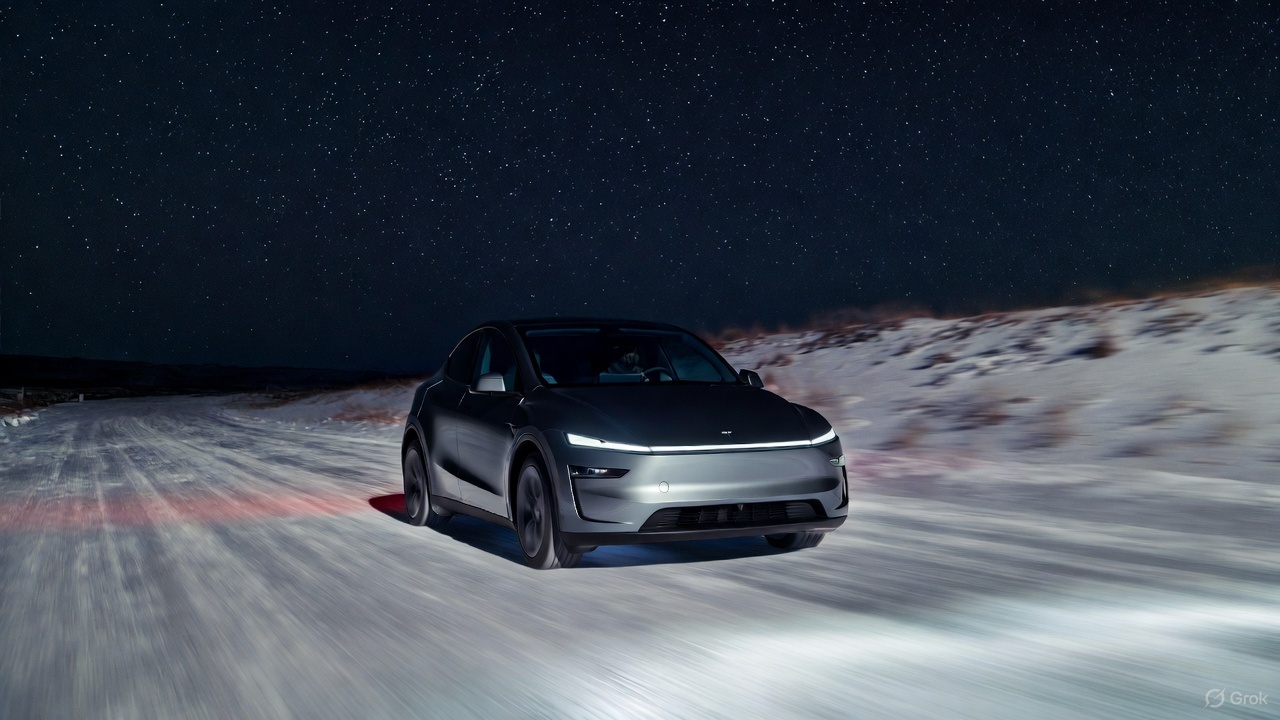
Tesla Full Self-Driving is getting its first taste of Winter weather for late 2025, as snow is starting to fall all across the United States.
The suite has been vastly improved after Tesla released v14 to many owners with capable hardware, and driving performance, along with overall behavior, has really been something to admire. This is by far the best version of FSD Tesla has ever released, and although there are a handful of regressions with each subsequent release, they are usually cleared up within a week or two.
Tesla is releasing a modified version of FSD v14 for Hardware 3 owners: here’s when
However, adverse weather conditions are something that Tesla will have to confront, as heavy rain, snow, and other interesting situations are bound to occur. In order for the vehicles to be fully autonomous, they will have to go through these scenarios safely and accurately.
One big issue I’ve had, especially in heavy rain, is that the camera vision might be obstructed, which will display messages that certain features’ performance might be degraded.
So far, from what we’ve seen, snow has not been a huge issue for the most recent Full Self-Driving release. It seems to be acting confidently and handling even snow-covered roads with relative ease:
FSD 14.1.4 snow storm Ontario Canada pic.twitter.com/jwK1dLYT0w
— Everything AI (@mrteslaspace) November 17, 2025
I found the steepest, unplowed hill in my area and tested the following:
• FSD 14.2.1 on summer tires
• FSD 14.2.1 on winter tires
• Manual drivingBut I think the most impressive part was how FSD went DOWN the hill. FSD in the snow is sublime $TSLA pic.twitter.com/YMcN7Br3PU
— Dillon Loomis (@DillonLoomis) December 2, 2025
Well.. I couldn’t let the boys have all the fun!
Threw the GoPro up and decided to FSD v14.2.1 in the snow. Roads were not compacted like the other day, a little slippery, but overall doable at lower speeds. Enjoy the video and holiday music 🎶
Liked:
Took turns super slow… pic.twitter.com/rIAIeh3Zu3— 🦋Diana🦋 (@99_Colorado) December 3, 2025
Moving into the winter months, it will be very interesting to see how FSD handles even more concerning conditions, especially with black ice, freezing rain and snow mix, and other things that happen during colder conditions.
We are excited to test it ourselves, but I am waiting for heavy snowfall to make it to Pennsylvania so I can truly push it to the limit.








